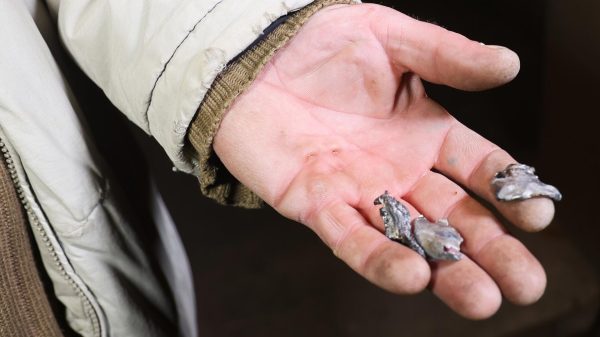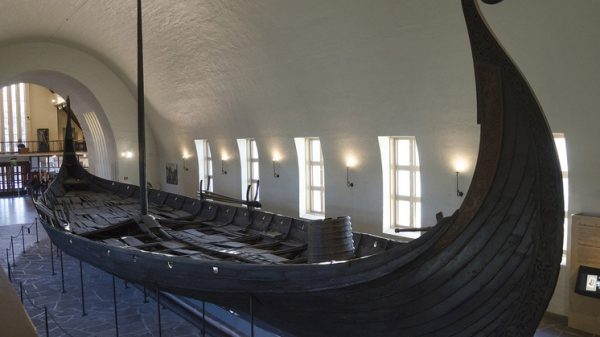Science is revolutionizing our understanding of the past
In the year 2023, scientists managed to unravel a number of historical mysteries. Here are just six of the most interesting mysteries of history that modern science has managed to “hack.”

Paleogenetics reveals the amazing secrets of DNA hidden in bones and dirt. Artificial intelligence deciphers ancient texts written in forgotten scripts. Chemical analysis of molecular residues left on teeth, kitchen pots, incense burners and building materials reveals details about past diets, odors and building techniques.
CNN reveals six mysteries of human history that scientists have solved in 2023 ( plus one that researchers are still scratching their heads over).
Buried with an impressive crystal dagger and other precious artifacts, the 5,000-year-old skeleton discovered in 2008 in a tomb near Seville, Spain, clearly once belonged to someone important. The man was initially thought to be a young man, based on analysis of the pelvic bones, the traditional way scientists determine the sex of human skeletal remains. However, analysis of tooth enamel, which contains a type of protein with a sex-specific peptide called amelogenin, determined that the remains were female, not male.
Other studies have also dispelled the technique about the «male hunter» cliché. ;, which influenced many ideas about early people.
«We think this method will open a whole new era in the analysis of the social organization of prehistoric societies,» Leonardo García Sanjuan, a professor of prehistory at the University of Seville, told CNN in July when the discovery was made public.
< /p>
Roman concrete has proven to be more durable than its modern counterparts, which can take decades to deteriorate. Take, for example, the Pantheon in Rome, which has the world's largest unreinforced dome, notes CNN.
The scientists behind the study, published in January, said they had discovered the mysterious ingredient that allowed the Romans to make their building materials so strong and build complex structures in challenging places such as docks, sewers and earthquake zones.
The research team analyzed 2,000-year-old concrete samples that were taken from the city wall at the archaeological site of Privernum in central Italy and are similar in composition to other types of concrete found throughout the Roman Empire.
They discovered that white bits in the concrete, called lime chips, give the concrete its ability to «heal» water. cracks that form over time. White pieces had not previously been considered evidence of poor mixing or poor quality raw materials.
Tourists found Ötzi's mummified body in a ravine high in the Italian Alps in 1991 year. His frozen remains are perhaps the most carefully studied archaeological find in the world, revealing in unprecedented detail what life was like 5,300 years ago.
The contents of his stomach provided information about what the ancient man had last eaten and where he was from, while his weapons showed that he was right-handed and his clothing gave a rare glimpse into what the ancient people actually wore.
But new analysis of DNA extracted from Ötzi's pelvis in August showed that his appearance was not what scientists first thought.
A study of his genetic makeup revealed that Ötzi the Iceman had dark skin and dark eyes — and he was probably bald. This altered appearance contrasts sharply with Ötzi's well-known reconstruction, which shows a pale-skinned man with thick hair and a beard.
Archaeologists often find bone tools and other artifacts at ancient sites, but it is impossible to know for sure who once used or carried them.
Earlier this year, scientists extracted ancient human DNA from a pendant made from deer bone found in Denisova Cave in Siberia. Thanks to this clue, they were able to determine that its owner was a woman who lived between 19,000 and 25,000 years ago.
She belonged to a group known as the Ancient North Eurasians, who have genetic connections to the first Americans.< /p>
Human DNA was likely preserved in the deer bone pendant because it is porous and therefore more likely to preserve genetic material present in skin cells, sweat, and other body fluids.
It is unknown why the deer tooth pendant contained such a large amount of DNA from an ancient woman (about the same amount as a human tooth). It may have been much loved and worn close to the skin for an exceptionally long period, says Elena Essel, a molecular biologist at the Max Planck Institute for Evolutionary Anthropology in Leipzig, Germany, who developed the new DNA extraction technique.
About 1,100 scrolls were burned during the famous eruption of Vesuvius almost 2,000 years ago. In the 1700s, enterprising excavators unearthed a huge cache of volcanic mud.
The collection known as the Herculaneum Scrolls is perhaps the largest known library of classical antiquity, but the contents of the fragile documents remained a mystery until a student The University of Nebraska computer science student did not win a science competition earlier this year.
Using artificial intelligence and CT imaging, Luke Farritor was the first to decipher the word written in ancient Greek on one of these blackened scrolls.
Farritor was awarded $40,000 for deciphering the word “π ορφυρας” or «porphyras», which in Greek means «purple». Researchers hope it won't be long before entire scrolls can be deciphered using this technique.
From fragments of discarded pots in an embalming workshop, scientists discovered some substances and decoctions that the ancient Egyptians used to mummify the dead.
By chemically analyzing the organic remains left in the vessels, the researchers determined that the ancient Egyptians used a wide variety of substances to anoint the body after death to reduce unpleasant odors and protect it from fungi, bacteria and decay. Identified materials include vegetable oils such as juniper, cypress and cedar, as well as resins from pistachio trees, animal fat and beeswax.
While scientists previously learned the names of substances used to embalm the dead from Egyptian texts, they — until recently — could only guess what kind of compounds and materials we are talking about.
The ingredients used in the workshop were varied and came not only from Egypt, but also from much further afield, suggesting a long-distance exchange of goods.
Composer Ludwig van Beethoven died at the age of 56 in 1827 after a series of chronic health problems, including hearing loss, gastrointestinal problems and liver disease.
In 1802, Beethoven wrote a letter to his brothers requesting that his physician Johann Adam Schmidt study the nature of the composer's illnesses after his death. This letter is known as the Heiligenstadt Will.
Nearly 200 years after his death, scientists extracted DNA from preserved strands of hair in an attempt to fulfill this request.
The team was unable to make a definitive diagnosis, but genetic Beethoven's data helped researchers rule out potential causes of his illness, such as the autoimmune disease celiac disease, lactose intolerance or irritable bowel syndrome.
Genetic information also suggested that an extramarital affair had occurred in the composer's family.























































Свежие комментарии